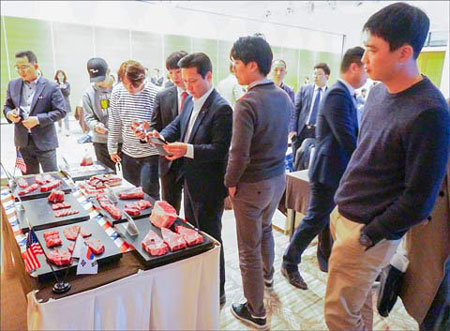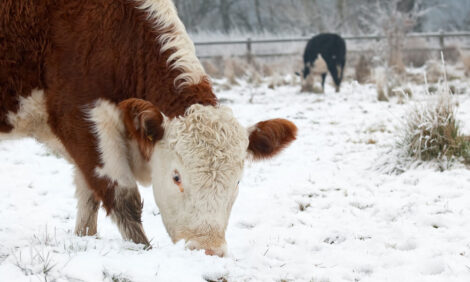



Growth of Korea’s Jeju Island Provides Opportunities for US Red Meat
SOUTH KOREA - Sharing new menu trends with restaurants and food-service companies that have set up shop on Korea’s Jeju Island, USMEF conducted a US red meat seminar for more than 70 food distributors and suppliers.
The seminar, funded by the USDA Market Access Program (MAP), the Pork Checkoff and the Beef Checkoff Program, followed last year’s initial, very successful effort on the island.

"As more Koreans buy homes on Jeju Island and more restaurants and foodservice companies open there to serve them, it’s a great time to familiarize these businesses with US pork and beef," said Jihae Yang, USMEF director in South Korea.
"USMEF also invited US pork and beef suppliers who are interested in supplying Jeju Island. We also arranged meetings between suppliers and attendees after the seminar."
Alex Choi, USMEF assistant marketing manager in Korea, gave seminar participants an overview of US pork and beef production and the current pricing situation.
Mr Choi also provided information on US hog and cattle breeds, the USDA grading system and various marketing programs and branded products in the Korean market.
Elly Sung, USMEF marketing manager in Korea, discussed restaurant menu trends and specifically addressed the attributes of US dry-aged beef. She introduced steak menu concepts featuring both bone-in and boneless steak cuts.
Ms Sung also detailed the growth of premium burgers and sandwiches in the Korean market, as well as the popularity of menu items using processed pork products.
Junil Park, USMEF senior marketing manager, used a cutting demonstration to offer merchandising suggestions for cuts that can serve as economical alternatives to higher-priced meat items.
He demonstrated a trimming method using US beef brisket, flap meat, hanging tender, top blade, clod and center of heel.
USMEF displayed US pork Boston butt, back ribs, spare ribs and processed items, along with US beef short ribs, chuck short ribs, brisket, chuck roll, short plate, petite tender, hanging tender, center of heel, bone-in ribeye roll, short loin, clod, outside skirt, flap meat, flat iron and back ribs and dry-aged ribeye.
Various Korean, Chinese, Japanese and western style US pork and beef samples were prepared for participants.
After the seminar, USMEF gave out US pork and beef sample packages so attendees could take the products back to work and test them with their own cooking styles.
"The food industry on Jeju Island is less exposed to US meat, and distribution channels are not as firmly established as they are on the mainland," said Ms Sung.
"The sample packages allowed each company to test products after the seminar, and we believe they will ultimately increase the level of interest in US meat."
Ms Yang said the effort to promote US pork and beef on Jeju Island will continue – and for good reason.
"Rather than being focused only on sightseeing, Jeju Island is becoming a destination for relaxing and eating well, and its economy has been booming," she explained.
"Even though food consumption is still heavily focused on local seafood and black pork, trends are changing because of the growing number of people moving in from the mainland.
"The number of foodservice outlets has increased, too – from major five-star hotels to small boutique hotels.
"Many chefs from Seoul have moved to Jeju Island to launch restaurants, and overall meat demand has steadily increased."
TheCattleSite News Desk


